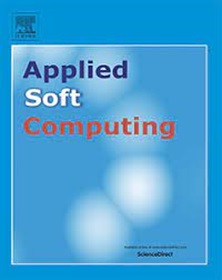Unsupervised discovery of 3D structural elements for scanned indoor scenes
IF 7.2
1区 计算机科学
Q1 COMPUTER SCIENCE, ARTIFICIAL INTELLIGENCE
引用次数: 0
Abstract
This paper addresses the growing demand for effective 3D sensing applications by presenting a comprehensive point cloud segmentation method developed for large indoor spaces. Our approach recognises the challenges associated with (un)ordered data and presents a robust algorithm capable of dealing with irregularities caused by measurement inaccuracies, e.g. occlusion, noise, outliers and discontinuous data transitions. The method uses a multi-step filtering approach that sequentially navigates through Gaussian map, distance space and regular grid representations. Connected component analysis, structural rules and assumptions guide the unsupervised clustering of structural elements (SEs), e.g. walls, ceilings and floors. The method is adaptable to various datasets, including joint 2D-3D datasets such as true RGB-D data. A colour metric is introduced to account for illumination effects during scanning and to ensure the generalisability of the method. The importance of detecting SEs lies in their role as input to deep neural networks, which improve the accuracy of SLAM algorithms and influence the quality of subsequent indoor residual object detection. This paper introduces density-based clustering of objects using colour similarity measures and low-level features to further refine the segmentation by eliminating outliers and improving the detection of sharp shapes. The proposed method represents a sophisticated and versatile solution that overcomes scene complexity and makes an important contribution to applications in scene understanding, SLAM and indoor object recognition.
求助全文
约1分钟内获得全文
求助全文
来源期刊

Applied Soft Computing
工程技术-计算机:跨学科应用
CiteScore
15.80
自引率
6.90%
发文量
874
审稿时长
10.9 months
期刊介绍:
Applied Soft Computing is an international journal promoting an integrated view of soft computing to solve real life problems.The focus is to publish the highest quality research in application and convergence of the areas of Fuzzy Logic, Neural Networks, Evolutionary Computing, Rough Sets and other similar techniques to address real world complexities.
Applied Soft Computing is a rolling publication: articles are published as soon as the editor-in-chief has accepted them. Therefore, the web site will continuously be updated with new articles and the publication time will be short.
 求助内容:
求助内容: 应助结果提醒方式:
应助结果提醒方式:


